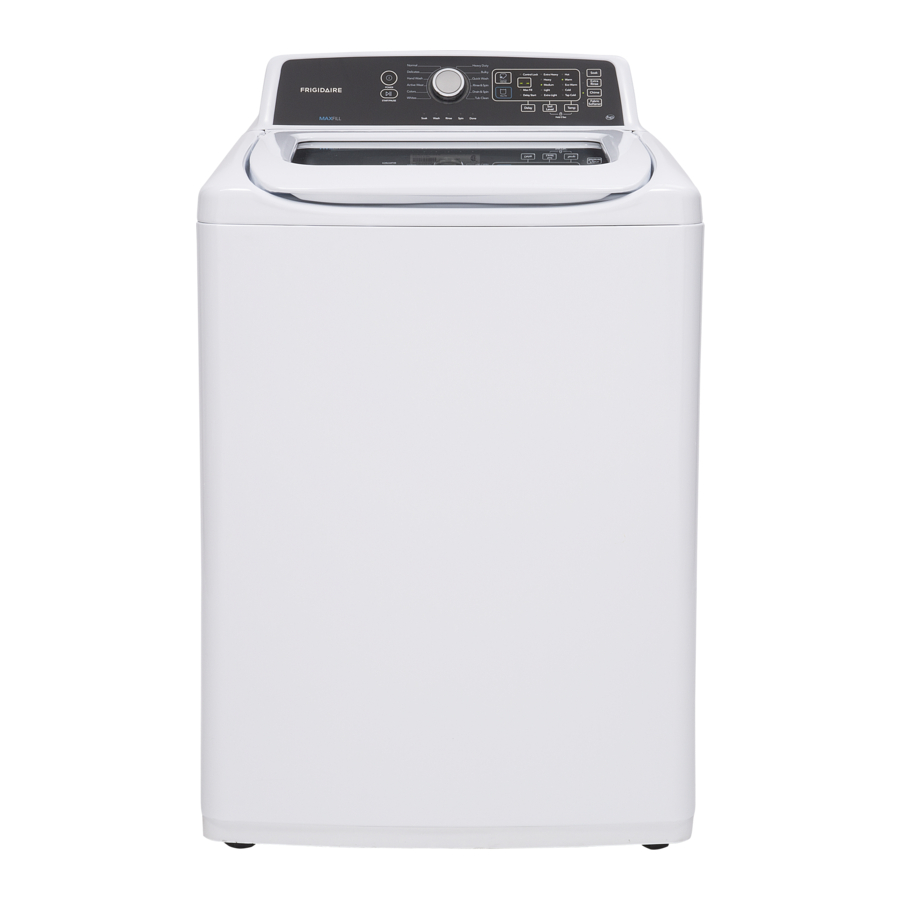
Frigidaire FFTW4120SW - 4.7 Cu. Ft. I.E.C. High Efficiency Top Load Washer Manual
- Use & care manual (20 pages)
Advertisement
- 1 OPERATING INSTRUCTIONS
- 2 STAIN REMOVAL GUIDE
- 3 CARE AND CLEANING
- 4 SOLUTIONS TO COMMON WASHING INQUIRIES
- 5 AVOID SERVICE CHECKLIST
- 6 IMPORTANT SAFETY INSTRUCTIONS
- 7 Documents / Resources

OPERATING INSTRUCTIONS
Washing Procedures
 |
| To reduce the risk of fire, electric shock or injury to persons, read the IMPORTANT SAFETY INSTRUCTIONS in this Use and Care Guide before operating your washer. |
- Sort laundry into loads that can be washed together.
![]()
- Sort items by recommended cycle and water temperature.
- Separate white, light and colorfast items from dark and non-colorfast items.
- Separate items that shed lint from items that attract lint. Casual, synthetic, knit, and corduroy items will pick up lint from towels, rugs, and bedspreads.
- Separate heavily soiled items from lightly soiled items.
- Separate lacy, sheer, loosely knit, or delicate items from durable items.
- Do not machine wash items containing fiberglass. Small particles of fiberglass left in the drum may transfer to fabrics in other loads and cause skin irritation and/or damage to fabrics.
- Prepare items for washing.
- Empty pockets.
![Frigidaire - FFTW4120SW - Washing Procedures - Step 1 Washing Procedures - Step 1]()
- Brush off lint and dirt. Shake out rugs and beach towels.
- Close zippers, fasten hooks, button buttons, tie strings and sashes, and remove non-washable trims and ornaments.
- Mend rips and tears to prevent further damage during washing.
- Turn knit items inside out to prevent pilling.
- Place delicate and small items such as bras, hosiery and baby socks in a mesh bag.
![]()
(Mesh bag not included.)
- Empty pockets.
- Pretreat stains and heavy soil.
![]()
- See Stain Removal Guide in this guide for safe, successful stain removal instructions.
- Add a measured amount of detergent to the detergent compartment.
- Follow detergent manufacturer's directions. The amount required depends on type of detergent, load size and soil level, and water hardness.
![Frigidaire - FFTW4120SW - Washing Procedures - Step 2 Washing Procedures - Step 2]()
![]() For best results
For best results
Use a low-sudsing, high efficiency detergent to prevent oversudsing. Look for this symbol on the detergent label:![]()
- If using pod-type detergent packs, place them directly at the bottom of empty tub BEFORE adding laundry.
![]()
- Follow detergent manufacturer's directions. The amount required depends on type of detergent, load size and soil level, and water hardness.
- If desired, add liquid bleach to bleach dispenser.
- Before adding the wash load, add liquid bleach to bleach dispenser.
![Frigidaire - FFTW4120SW - Washing Procedures - Step 3 Washing Procedures - Step 3]()
- Refer to bleach manufacturer's directions for quantity to add.
- Do not exceed the max fill line.
- Do not use powdered bleach in the bleach dispenser. Add powdered bleach to the empty tub.
- If using liquid color-safe bleach, add it to the liquid detergent dispenser if using liquid detergent.
- Before adding the wash load, add liquid bleach to bleach dispenser.
- Add laundry load to washer.
- For best washing performance, dry load level should not be higher than the upper row of holes in the wash tub. Do not overload the washer.
![Frigidaire - FFTW4120SW - Washing Procedures - Step 4 Washing Procedures - Step 4]()
- Combine large and small items in a load. Load small items first. Large items should not be more than half the total wash load.
- When washing a single heavy item, add 1 or 2 towels to balance the load.
- For best washing performance, dry load level should not be higher than the upper row of holes in the wash tub. Do not overload the washer.
- If desired, add liquid fabric softener to fabric softener dispenser.
![Frigidaire - FFTW4120SW - Washing Procedures - Step 5 Washing Procedures - Step 5]()
- Add liquid softener to the dispenser, following fabric softener label directions. DO NOT use granular detergent in this dispenser.
- DO NOT fill above the maximum fill line.
- Turn fabric softener option on.
- Do not use powder products in this dispenser.
Other Wash Products![]() NOTE
NOTE If a build-up of fabric softener occurs, clean with hot water. See Care and Cleaning section for additional information. - Water conditioner, detergent booster and enzyme products may be added with the detergent.
Use of multi-product (detergent plus softener) sheets or color-absorbing sheets NOT recommended. They could disable your machine and result in unwarranted repair costs.
- Select the appropriate cycle and settings for the load.
- Close the washer lid. The washer will not operate with the lid open.
- Press the POWER
![]() button to turn on the unit.
button to turn on the unit. - Turn the cycle selector in either direction to scroll to the desired cycle. The indicator for that cycle will be illuminated. See the "Cycle Selection" section in this guide for descriptions of each cycle.
- The estimated cycle time, preset wash water temperature, soil level, and options for each cycle will be indicated for the cycle displayed. See the "Cycle Settings" and "Washer Settings Chart" in this guide for descriptions and available settings for each cycle.
- To change the settings, press the Temp and Soil Level buttons to scroll to the desired settings.
- To select or deselect an option, press the button for that option. The indicator will be illuminated when the option has been selected. The indicator will no longer be lighted when the option has been deselected.
- After making your selections, press START to begin the cycle.
- To add a forgotten item to the wash tub, press the PAUSE button to pause the cycle. After the lock releases, lift the lid and add the item. Close the lid and press START again, continuing the current cycle.
- To cancel a running cycle, press the POWER
![]() button.
button.
- Remove items when the cycle is completed.
- For your safety, the lid is locked during the final spin of the cycle. It will unlock at the cycle end after the tub has come to a complete stop.
![Frigidaire - FFTW4120SW - Washing Procedures - Step 6 Washing Procedures - Step 6]()
- To open the lid during cycle final spin, press the PAUSE button to pause the cycle. Wait for the lid lock to release. Do not force open the locked lid.
To avoid serious personal injury, do not operate washer if safety lid lock is missing, damaged or operating improperly. - Remove items from the washer when the cycle ends and place in dryer, line dry or dry flat as directed on the fabric care label. Excess wrinkling, color transfer or odors may develop in items left in the washer after the cycle has ended.
- For your safety, the lid is locked during the final spin of the cycle. It will unlock at the cycle end after the tub has come to a complete stop.
Cycle Selection
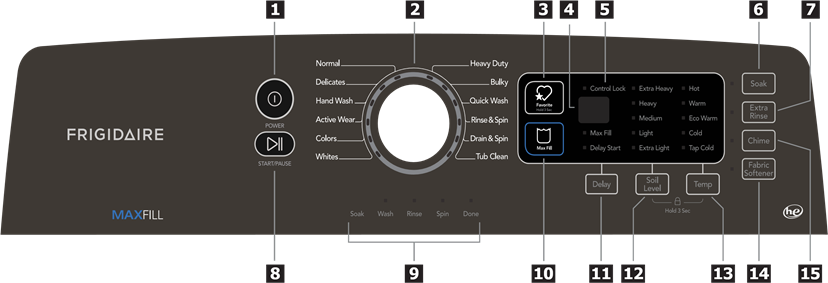
- POWER
- Cycle Selector
- Favorite Cycle
- LED Display
- Control Lock Indicator
- Soak
- Extra Rinse
- START/PAUSE
- Cycle Status Display
- Max Fill
- Delay Start
- Soil Level
- Temperature
- Fabric Softener
- Chime
This manual covers many models and not all cycles, options, or features listed are available on every model. Console shown above for reference only. Your model may differ.
Press the POWER ![]() button to turn on the unit. Turn the cycle selector in either direction to scroll through the cycles.
button to turn on the unit. Turn the cycle selector in either direction to scroll through the cycles.
To change the cycle once it has begun, press the POWER ![]() button before selecting a new cycle. Just turning the cycle selector will not change the cycle.
button before selecting a new cycle. Just turning the cycle selector will not change the cycle.
 For best results
For best results
Follow the fabric care label instructions on items to be washed.
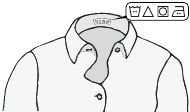
Normal
Use this load for light to normally soiled cottons, linens, towels, shirts, jeans and mixed loads.
Delicates
Use this cycle for lightly soiled knits and delicates which require gentle washing.
Hand Wash
Use this cycle to provide gentle agitation for items labeled "Hand Wash".
Active Wear
This cycle is designed for small loads of lightweight, synthetic apparel worn for working out, running, swimming, cycling, tennis and similar activities, including stretch fabrics, when removal of light soil and perspiration are important.
For best results, select a detergent that contains enzymes. Add a detergent booster, color safe bleach or odor eliminator with the detergent if needed. Chlorine bleach should not be used on items containing Lycra™. Fabric softeners reduce wicking and are not recommended for garments made to pull moisture away from the body.
 NOTE NOTE |
| Cleaning vinegar works well to freshen your load as a substitute to traditional fabric softeners. Load into fabric softener dispenser as normal. |
Colors
Use this cycle for lightly soiled, dark, or highly dyed fabrics which may be susceptible to dye loss.
Whites
Use this cycle for white fabrics and lightly colored clothing. Refer to fabric care label for use of liquid chlorine bleach. Hot water is recommended to ensure optimal bleach activation. For peak rinsing performance and to avoid chlorine residues on your laundry add Extra Rinse to this cycle.
Heavy Duty
Use this cycle for heavily soiled, durable garments - ex. towels, sports gear, fabric tote bags, jeans, or overalls. For best soil and stain removal, use the hottest water safe for the fabrics being washed.
Bulky
This cycle is designed for large items such as bedding and bulky items such as comforters, blankets, sleeping bags and parkas.
Quick Wash
Quickly wash a small, lightly soiled load.
Rinse & Spin
Select Rinse & Spin for loads that need a cold water rinse or to add fabric softener that may have been omitted in a regular cycle.
Drain & Spin
Use the drain & spin cycle anytime you want to drain water from the washer and spin out the load.
Tub Clean
To clean and freshen the washer, perform the Tub Clean cycle. This maintenance cycle removes residue that may cause odor. See Care and Cleaning section for detailed information about the clean washer cycle.
Cycle Settings
Select appropriate wash water temperature and soil level settings suitable for each load. Make selections according to fiber content, colorfastness and soil level.
The settings can be changed before the cycle is started. If changes are attempted after the cycle starts, the lights will flash and a signal will beep, but the cycle will continue.
 NOTE NOTE |
| To change the temperature or soil level once the cycle has begun, press the PAUSE button, make the new selection and press START again. |
Wash Water Temperature
To change the preset washing temperature, press the Temp button to scroll to the desired setting.
The water heater setting and its distance from the washer, water usage in other parts of the home, and seasonally low ground water temperature in some geographic areas can affect water temperature.
Hot
Use this setting for heavily soiled white or colorfast cottons and blends.
Warm
Use this setting for normally soiled white or colorfast cottons or blends.
Eco Warm
Use this setting for normally soiled sheets, casual items and washable woolens.
Cold
Some warm water will automatically blend with cold tap supply to achieve cold. Use this setting for lightly soiled noncolorfast items, knits, delicates, and hand washables.
Tap Cold
Wash and rinse temperatures are equivalent to temperature of cold tap supply. Use this selection for fabrics and colors that are prone to dye transfer. For use with cold water  detergents.
detergents.
Soil Level
To change the preset level, press the Soil Level button to scroll to the length of agitation desired.
Adjust duration of agitation time based on the soil level of each load. Extra Heavy, Heavy, Medium, Light, and Extra Light soil levels are available.
Cycle Options
To select an option, press the corresponding option button to illuminate the desired option. To deselect an option, press the option button again and the indicator light will turn off.
To protect your fabrics, not all options are available with every cycle. If an option is not appropriate for the cycle, the indicator will not light.
 NOTE NOTE |
| To change options once the cycle has begun, press the PAUSE button, make the new selection and press START again. |
Soak
Add a soak phase to the wash cycle to help release deep stains.
Extra Rinse
Use this option when additional rinsing is desired to remove excess dirt and detergent. It is recommended for heavily soiled loads or if household members have sensitive skin.
Chime
A signal will sound at the end of the cycle if this option is selected.
Fabric Softener
You must activate the fabric softener option for correct operation of the fabric softener dispenser. See Care and Cleaning for dispenser cleaning procedures.
Max Fill (certain cycles only)
Select the Max Fill feature for loads which need extra water. Pressing the Max Fill button adds the maximum amount of fill possible, and will increase cycle duration time. The Max Fill feature is not recommended for typical use and is only for special instances.
Other Features
POWER
Turn you washer on, off, or cancel the current cycle with the POWER ![]() button. If the washer is left on for more than ten minutes without pressing the START button, the washer will automatically turn off.
button. If the washer is left on for more than ten minutes without pressing the START button, the washer will automatically turn off.
Control Lock
To avoid having someone accidentally start or stop the washer, press Soil Level and Temp at the same time and hold for 3 seconds. The Control Lock indicator light will be illuminated. To remove the control lock, press and hold Soil Level and Temp again. If the lid is in the raised position for more than 20 seconds while the Control Lock feature is activated, " " will be displayed and the washer will begin draining water from the tub. To clear the display and stop the tub from draining, press the POWER
" will be displayed and the washer will begin draining water from the tub. To clear the display and stop the tub from draining, press the POWER ![]() button.
button.
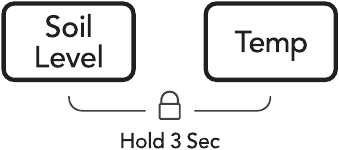
Estimated Time Remaining
The estimated cycle duration will be displayed before you start the cycle and time remaining will be displayed after you start the cycle. The initial display may be "- -" for some cycles. Out-of-balance situations during spins may occasionally lengthen actual cycle times.
Favorite Cycle
To program a custom wash cycle with your preferred settings and options use the Favorite option. After selecting the desired cycle and settings, press and hold the Favorite button for 3 seconds to store it. Recall your favorite cycle each time you press and release the Favorite button.

Delay Start
Press Delay to select a wash time convenient to your schedule or during off peak energy hours. Continue to press the button to add hours to the delay time. The delay time selected will be displayed and begin counting down when you press the START button. The cycle can be delayed from 1 to 24 hours in 1 hour increments. To cancel a delayed start, press the POWER ![]() button to turn the unit off. Once you press START after entering a delay time you cannot modify the cycle or options. To make changes, cancel the delay by pressing the POWER
button to turn the unit off. Once you press START after entering a delay time you cannot modify the cycle or options. To make changes, cancel the delay by pressing the POWER ![]() button, make your adjustments, add your delay and press START again to begin the delay countdown.
button, make your adjustments, add your delay and press START again to begin the delay countdown.
Status Lights

The following indicators may be lighted during the cycle, indicating the current phase of the wash cycle:
- Soak
- Wash
- Rinse
- Spin
- Done
Washer Settings Chart

These temperatures and options are available with the following cycles:
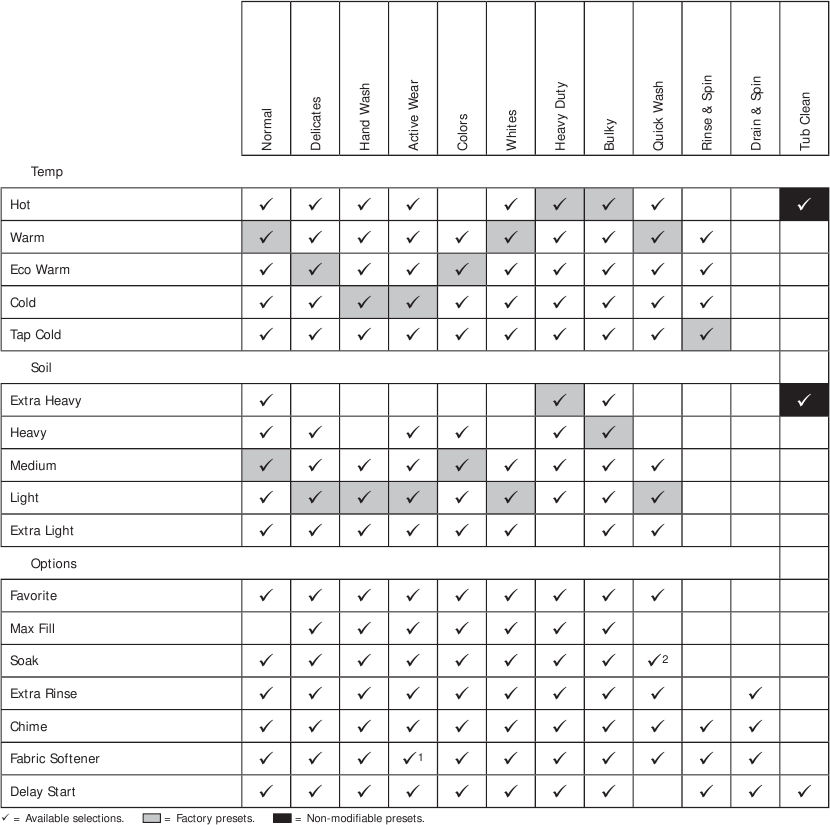
- Cleaning vinegar is recommended as softener substitute to maintain moisture wicking action of active wear fabrics.
- Adding Soak to Quick Wash cycle will result in a longer cycle time.
STAIN REMOVAL GUIDE
Safe Stain Removal Procedures
To reduce the risk of fire or serious injury to persons or property, comply with the basic warnings listed below:
- Read and comply with all instructions on stain removal products.
- Keep stain removal products in their original labeled containers and out of children's reach.
- Thoroughly wash any utensils used.
- Do not combine stain removal products, especially ammonia and chlorine bleach. Dangerous fumes can result.
- Never wash items which have been previously cleaned in, washed in, soaked in or spotted with gasoline, dry cleaning solvents or other flammable or explosive substances because they give off vapors that could ignite or explode.
- Never use highly flammable solvents, such as gasoline, inside the home. Vapors can explode on contact with flames or sparks.
For Successful Stain Removal
- Remove stains promptly.
- Determine the kind of stain, then follow the recommended treatment in the stain removal chart on the next page.
- To pretreat stains, use a prewash product, liquid detergent, or a paste made from powder detergent and water.
- Use cold water on unknown stains as hot water can set stains.
- Consult care label instructions for treatments to avoid on specific fabrics.
- Check for colorfastness by testing stain remover products on an inside seam.
- Rinse and wash items after stain removal.
 |
| HARMFUL VAPOR HAZARD Do not use or mix liquid chlorine bleach with other household chemicals such as toilet cleaners, rust removers, acid or products containing ammonia. These mixtures can produce dangerous fumes which can cause serious injury or death. |
 For best results For best results |
Follow the fabric care label instructions on items to be washed. |
Stain Removal Suggestions
| STAIN | TREATMENT |
| Adhesive tape, chewing gum, rubber cement | Apply ice. Scrape off excess. Place stain face down on paper towels. Saturate with prewash stain remover or nonflammable dry cleaning fluid. |
| Baby formula, dairy products, egg | Use product containing enzymes to pretreat or soak stains. Soak for 30 minutes or more. Wash. |
| Beverages (coffee, tea, soda, juice, alcoholic beverages) | Pretreat stain. Wash using cold water and bleach safe for fabric. |
| Blood | Rinse with cold water. Rub with bar soap. Or, pretreat or soak with product containing enzymes. Wash using bleach safe for fabric. |
| Candle wax, crayon | Scrape off surface wax. Place stain face down between paper towels. Press with warm iron until wax is absorbed. Replace paper towels frequently. Treat remaining stain with prewash stain remover or nonflammable dry cleaning fluid. Hand wash to remove solvent. Wash using bleach safe for fabric. |
| Chocolate | Pretreat or soak in warm water using product containing enzymes. Wash using bleach safe for fabric. |
| Collar or cuff soil, cosmetics | Pretreat with prewash stain remover or rub with bar soap. |
| Dye transfer on white fabric | Use packaged color remover. Wash using bleach safe for fabric. |
| Grass | Pretreat or soak in warm water using product containing enzymes. Wash using bleach safe for fabric. |
| Grease, oil, tar (butter, fats, salad dressing, cooking oils, car grease, motor oils) | Scrape residue from fabric. Pretreat. Wash using hottest water safe for fabric. For heavy stains and tar, apply nonflammable dry cleaning fluid to back of stain. Replace towels under stain frequently. Rinse thoroughly. Wash using hottest water safe for fabric. |
| Ink | Some inks may be impossible to remove. Washing may set some inks. Use prewash stain remover, denatured alcohol or nonflammable dry cleaning fluid. |
| Mildew, scorch | Wash with chlorine bleach if safe for fabric. Or, soak in oxygen bleach and hot water before washing. Badly mildewed fabrics may be permanently damaged. |
| Mud | Brush off dry mud. Pretreat or soak with product containing enzymes. |
| Mustard, tomato | Pretreat with prewash stain remover. Wash using bleach safe for fabric. |
| Nail polish | May be impossible to remove. Place stain face down on paper towels. Apply nail polish remover to back of stain. Repeat, replacing paper towels frequently. Do not use on acetate fabrics. |
| Paint, varnish | WATER BASED: Rinse fabric in cool water while stain is wet. Wash. Once paint is dry, it cannot be removed. OIL BASED AND VARNISH: Use solvent recommended on can label. Rinse thoroughly before washing. |
| Perspiration | Use prewash stain remover or rub with bar soap. Rinse. Wash using nonchlorine bleach in hottest water safe for fabric. |
| Rust, brown or yellow discoloration | Use rust remover safe for fabric. Do not use chlorine bleach because it may intensify discoloration. |
| Shoe polish | LIQUID: Pretreat with a paste of powder detergent and water. PASTE: Scrape residue from fabric. Pretreat with prewash stain remover or nonflammable dry cleaning fluid. Rinse. Rub detergent into dampened area. Wash using bleach safe for fabric. |
| Tomato | Pretreat with prewash stain remover. Wash using bleach safe for fabric. |
| Urine, vomit, mucus, feces | Pretreat or soak in product containing enzymes. Wash using bleach safe for fabric. |
| Wine | Pretreat or soak in cold water. Wash in hottest water and bleach safe for fabric |
CARE AND CLEANING
Tub Clean Cycle
To help prevent odors or humidity accumulation leave the lid open for a few hours after use or whenever the washer is not in use.
 |
| Do not leave the lid open if there are small children or pets present. An open lid could entice children to crawl inside the washer. If there are no small children present, you may leave the lid up to prevent odor build up. |
To clean and freshen the wash tub, perform the Tub Clean cycle. For best results perform the cycle once a month.
To begin the cycle, select the Tub Clean cycle. REMOVE ALL ITEMS FROM WASH TUB before adding one (1) cup of liquid chlorine bleach OR one (1) pouch of Tide® Washing Machine Cleaner to the empty tub. DO NOT use both. Press START to begin.
 |
| Items left in washer while performing the Tub Clean cycle may cause damage to the washing machine. |
 For best results For best results |
| Immediately follow up with a Rinse & Spin cycle to help clear any residual bleach left after the Tub Clean cycle. |
 |
| HARMFUL VAPOR HAZARD Do not use or mix liquid chlorine bleach with other household chemicals such as toilet cleaners, rust removers, acid or products containing ammonia. These mixtures can produce dangerous fumes which can cause serious injury or death. |
Cleaning Instructions
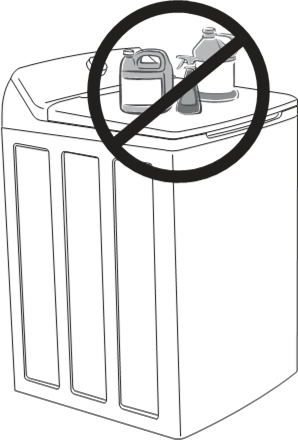
 |
| Do not store or place laundry products on top of washer at any time. They can damage the finish or controls. |
INSIDE
- Remove items from the washer as soon as the cycle ends. Excess wrinkling, color transfer, and odors may develop in items left in the washer.
- Dry the washer top, the area around the lid opening, and the underside of the lid. These areas should always be dry before the lid is closed.
- Before cleaning the washer interior, unplug the electrical power cord to avoid electrical shock hazards.
- When extremely soiled items have been washed, a dirty residue may remain on the tub. Remove this by wiping the tub with a nonabrasive household cleanser. Rinse thoroughly with water.
- The agitator or tub may become stained from fabric dye. Clean these parts with a nonabrasive household cleanser. This prevents dye transfer to future loads.
- Detergent, bleach, and fabric softener compartments are not removable. To remove residue buildup, wipe with a damp cloth and towel dry.
OUTSIDE
- When washing is completed, wipe top and sides of washer with a damp cloth.
- Clean the cabinet with mild soap and water. Never use harsh, gritty or abrasive cleansers
- If the cabinet becomes stained, clean with diluted chlorine bleach (1 part bleach to 8 parts water). Rinse several times with clear water.
- Remove glue residue from tape or labels with a mixture of warm water and mild detergent. Or, touch residue with the sticky side of tape.
- Before moving the washer, place a strip of cardboard or thin fiberboard under the front leveling legs to prevent damage to the floor.
Winterizing Instructions
 |
| If the washer is stored in an area where freezing can occur or moved in freezing temperatures, follow these winterizing instructions to prevent damage to the washer: |
- Turn off water supply faucets.
- Disconnect hoses from water supply and drain water from hoses.
- Plug electrical cord into a properly grounded electrical outlet.
- Add 1 gallon (3.8 L) nontoxic recreational vehicle (RV) antifreeze to empty wash tub. Close lid.
- Select the Drain & Spin cycle. Start the cycle and let the washer drain for 1 minute to drain out all the water. Not all of the RV antifreeze will be expelled.
- Stop the cycle, unplug electrical power cord, dry off tub interior and close the lid.
- Store washer in an upright position.
- To remove antifreeze from washer after storage, run empty washer through a complete cycle using detergent. Do not add wash load.
Follow WINTERIZING INSTRUCTIONS for cold weather storage and care.

SOLUTIONS TO COMMON WASHING INQUIRIES
Many washing problems involve poor soil and stain removal, residues of lint and scum, and fabric damage. For satisfactory washing results, follow these suggestions provided by The Soap and Detergent Association.
| PROBLEM | POSSIBLE CAUSES | SOLUTIONS | PREVENTIVE MEASURES |
| Blue stains |
|
|
|
| Discoloration, graying |
|
|
|
| Greasy, oily stains |
|
|
|
| Holes, tears, or snags |
|
|
|
| Lint |
|
|
|
| Pilling (Fibers ball up and cling to fabric.) |
|
|
|
| Residue or powder on dark items; Stiff, harsh fabrics. |
|
|
|
| Wrinkling |
|
|
|
| Yellow buildup of body soil on synthetic fabrics |
|
|
|
| Yellow or brown rust stains |
|
|
|
AVOID SERVICE CHECKLIST
Before calling for service, review this list. It may save both time and expense. The list includes common occurrences that are not the result of defective workmanship or materials in this washer.
| OCCURRENCE | POSSIBLE CAUSE | SOLUTION |
| NOISE | ||
| Rattling and clanking noise. | Foreign objects such as coins or safety pins may be in tub or pump. | Stop washer and check drum. If noise continues after washer is restarted, objects may be in pump. Call your authorized servicer. |
| Belt buckles and metal fasteners are hitting wash tub. | To prevent unnecessary noise and damage to tub, fasten fasteners and turn items inside out. | |
| Thumping sound. | Heavy wash loads may produce a thumping sound. This is usually normal. If sound continues, washer is probably out of balance. | Stop washer and redistribute wash load. |
| Vibrating noise. | Washer is not resting firmly on floor. | Move washer so it rests firmly on floor. Adjust leveling legs. See INSTALLATION INSTRUCTIONS for details. |
| Foam shipping support has not been removed during installation. | See INSTALLATION INSTRUCTIONS for removing foam shipping support. | |
| Wash load unevenly distributed in tub. | Stop washer and rearrange wash load. | |
| OPERATING | ||
| Washer does not start. | Washer lid is open. | Close washer lid. The washer will not operate when the lid is open. |
| Electrical power cord may not be plugged in or connection may be loose. | Make sure plug fits tightly in wall outlet. | |
| House fuse blown, circuit breaker tripped, or a power outage has occurred. | Reset circuit breaker or replace fuse. Do not increase fuse capacity. If problem is a circuit overload, have it corrected by a qualified electrician. If problem is a power outage, call local electric company. | |
| Water supply faucets are not turned on. | Turn on water supply faucets. | |
| Motor is overheated. Washer motor will stop if it becomes overheated. | Wait for the motor to cool down before attempting to restart. | |
| Washer won't spin. | Lid is not completely closed. | Close washer lid. The washer will not operate when the lid is open. |
| Residue left in drum. | Heavily soiled items. | Wipe tub with a nonabrasive household cleanser, then rinse. Shake or brush excess dirt and sand from items before washing |
| WATER | ||
| Wash load too wet after spin. | Washer is overloaded. | Do not overload washer. See Washing Procedures. |
| Load is out of balance. | Rearrange load to allow proper spinning. | |
| Drain hose is kinked. | Straighten drain hose. | |
| Water does not enter washer or it enters slowly. | Washer lid is open. | Close washer lid. The washer will not operate when the lid is open. |
| Water supply is not adequate in area. | Check another faucet in the house. Wait until water supply and pressure increase. | |
| Water supply faucets are not completely open. | Fully open hot and cold faucets. | |
| Water is being used elsewhere in the house. | Water pressure must be at least 10 psi (69 kPa). Avoid running water elsewhere while washer is filling. | |
| Water inlet hoses are kinked. | Straighten hoses. | |
| Warm or hot water is not hot enough. | Hot water heater is set too low or is a distance from washer. | Measure hot water temperature at nearby faucet with candy or meat thermometer. Water temperature should be at least 120°F (50°C). Adjust water heater as necessary. |
| Hot water is being used elsewhere in the house. | Avoid using hot water elsewhere before or during washer use. There may not be enough hot water available for proper cleaning. If problem persists, your hot water system may be unable to support more than 1 use at a time. | |
| Water in washer does not drain or drains slowly. | Drain hose is kinked or clogged. | Clean and straighten the drain hose. |
| Water leaks. | Loose fill hose connection at faucet or washer. | Check and tighten hose connections. Ensure rubber sealing washers are installed. |
| House drain pipes are clogged. | Unclog drain pipes. Contact plumber if necessary. | |
| Incorrect wash and rinse temperatures. | Hot and cold water hoses are connected to wrong supply faucets. | Connect hot water hose to hot water faucet and cold water hose to cold water faucet. |
| Water is entering washer but tub does not fill. | Drain hose standpipe is incorrect height. | Standpipe must be a minimum of 36" (90 cm) high to prevent siphoning. See INSTALLATION INSTRUCTIONS. |
| Water is present in tub after wash cycle is complete. | Lid lock malfunction. | Do not bypass lid lock. Call your authorized servicer. |
| The drain and spin cycles did not occur. | Lid lock malfunction. | Do not bypass lid lock. Call your authorized servicer. |
Error Codes
| ERROR CODE | POSSIBLE CAUSE | SOLUTIONS |
 | Water fill time takes too long (1 hour) |
|
 | Washer takes too long to drain (10 minutes) |
|
 | Washer lid open |
|
 | Washer is out-of-balance |
|
 | PCB failed |
|
 | Load sensing failed |
|
 | Water level sensor failed |
|
 | Lid lock failed |
|
 | PCB failed |
|
 | Lid open for more than 20 seconds with Control Lock function activated |
|
IMPORTANT SAFETY INSTRUCTIONS
 |
| Please read all instructions before using this washer. |
Recognize safety symbols, words and labels
Safety items throughout this manual are labeled with a WARNING or CAUTION based on the risk type as described below:
Definitions

 |
| DANGER indicates an imminently hazardous situation which, if not avoided, will result in death or serious injury. |
 |
| WARNING indicates a potentially hazardous situation which, if not avoided, could result in death or serious injury. |
 |
| CAUTION indicates a potentially hazardous situation which, if not avoided, may result in minor or moderate injury. |
 |
| IMPORTANT indicates installation, operation or maintenance information which is important but not hazard-related. |
Product Record
Record Your Model and Serial Numbers
The model and serial numbers of your washer are found on the serial plate located under the washer lid. Record and retain these numbers.
Read all instructions before using this appliance. This book contains valuable information about:
- Operation
- Care
- Service
Keep it in a safe place.
This Use and Care Guide provides general operating instructions for your washer. It also contains information about features for several other models. Your washer may not have every feature included.
Use the washer only as instructed in this Use & Care Guide.
 NOTE NOTE |
| The instructions appearing in this Use and Care Guide are not meant to cover every possible condition and situation that may occur. Common sense and caution must be practiced when installing, operating and maintaining any appliance. |
Save these instructions for future reference.
 RISK OF FIRE | |
| To reduce the risk of fire, electrical shock, or injury to persons when using this washer, comply with the basic warnings listed below. Failure to comply with these warnings could result in serious personal injuries. You can be killed or seriously injured if you don't follow these Important Safety Instructions: |
PREVENT FIRE
- Do not wash items that have been previously cleaned in, soaked in, or spotted with gasoline, cleaning solvents, kerosene, cooking oils, waxes, etc. Do not store these items on or near the washer. These substances give off vapors or chemical reactions that could ignite or explode.
- Do not put oily or greasy rags or clothing on top of the washer. These substances give off vapors that could ignite the materials.
- Do not add gasoline, cleaning solvents, or other flammable or explosive substances to the wash water. These substances give off vapors that could ignite or explode.
- Under certain conditions, hydrogen gas may be produced in a hot water system that has not been used for 2 weeks or more. HYDROGEN GAS IS EXPLOSIVE. If the hot water system has not been used for such a period, before using the washer, turn on all hot water faucets and let the water flow from each for several minutes. This will release any accumulated hydrogen gas. Hydrogen gas is flammable; do not smoke or use an open flame during this time.
- Do not store or use gasoline or other flammable vapors or liquids in the vicinity of this or any other appliance.
- Failure to comply with these warnings could result in fire, explosion, serious bodily injury and/or damage to the rubber or plastic parts of the washer.
- Do not continue to use the washer if you hear squeaking, grinding, rubbing or other unusual noises. This could be a sign of mechanical breakdown and lead to fire or serious injury. Contact a qualified technician immediately.
PROTECT CHILDREN
- Do not allow children to play on or in the washer. Close supervision of children is necessary when the washer is used near children. As children grow, teach them the proper, safe use of all appliances.
- Destroy the carton, plastic bag and other packing materials after the washer is unpacked. Children might use them for play. Cartons covered with rugs, bedspreads or plastic sheets can become airtight chambers.
- Keep laundry products out of children's reach. To prevent personal injury, observe all warnings on product labels.
- Before the washer is removed from service or discarded, remove the washer lid to prevent accidental entrapment.
- Failure to comply with these warnings could result in serious personal injuries.
PREVENT INJURY
- To prevent shock hazard and assure stability during operation, the washer must be installed and electrically grounded by a qualified service person in accordance with local codes. Installation instructions are packed in the washer for installer's reference. Refer to INSTALLATION INSTRUCTIONS for detailed grounding procedures. If the washer is moved to a new location, have it checked and reinstalled by a qualified service person.
- To prevent personal injury or damage to the washer, the electrical power cord of the washer must be plugged into a properly grounded and polarized 3-prong outlet. The third grounding prong must never be removed. Never ground the washer to a gas pipe. Do not use an extension cord or an adaptor plug.
![Frigidaire - FFTW4120SW - Grounding Plug Grounding Plug]()
- Follow package directions when using laundry products. Incorrect usage can produce poisonous gas - resulting in serious injury or death.
- Do not combine laundry products for use in same load unless specified on the label.
- Do not mix chlorine bleach with ammonia or acids such as vinegar.
 |
| FIRE/ELECTRICAL SHOCK HAZARD Avoid fire hazard or electrical shock. Do not use an adaptor plug or extension cord or remove grounding prong from electrical power cord. Failure to follow this warning can cause serious injury, fire or death. |
PREVENT INJURY AND DAMAGE TO THE APPLIANCE
To prevent serious personal injury and damage to the washer:
- All repairs and servicing must be performed by an authorized servicer unless specifically recommended in thisUse & Care Guide. Use only authorized factory parts.
- Do not tamper with controls.
- Do not install or store the washer where it will be exposed to the weather.
- Do not install on carpet. Install washer on a solid floor. It may be necessary to reinforce the floor to prevent vibration or movement.
- Do not sit on, step on or stand on the washer. Do not rest heavy loads on top. The washer is not meant to support weight.
- To reduce the risk of electric shock, disconnect this appliance from the power supply before attempting any user maintenance. Canceling a cycle or turning the power off at the console does not disconnect this appliance from the power supply.
- To prevent injury, do not reach into the washer while parts are moving. Before loading, unloading or adding items, press POWER
![]() button to stop the cycle. Allow the wash tub to coast to a complete stop before reaching inside.
button to stop the cycle. Allow the wash tub to coast to a complete stop before reaching inside. - This washer is equipped with an electrical overload protector. The washer motor will stop if it becomes overheated.
- Failure to comply with these warnings could result in serious personal injuries.
 |
| HARMFUL VAPOR HAZARD Do not use or mix liquid chlorine bleach with other household chemicals such as toilet cleaners, rust removers, acid or products containing ammonia. These mixtures can produce dangerous fumes which can cause serious injury or death. |
 |
| Do not wash water-resistant clothing, rugs, mats, or other waterproof items. This may create a hazardous out-of-balance situation. |
Read all instructions before operating this washer.
www.frigidaire.com USA 1-800-944-9044
www.frigidaire.ca Canada 1-800-265-8352

Documents / ResourcesDownload manual
Here you can download full pdf version of manual, it may contain additional safety instructions, warranty information, FCC rules, etc.
Download Frigidaire FFTW4120SW - 4.7 Cu. Ft. I.E.C. High Efficiency Top Load Washer Manual
Advertisement

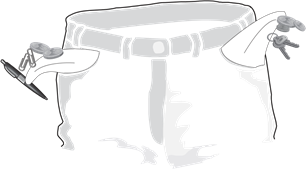
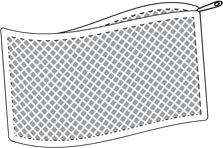

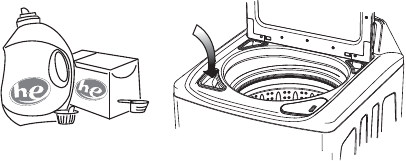
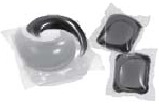
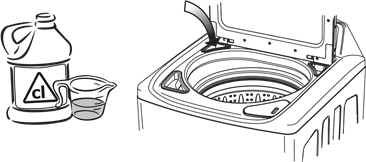
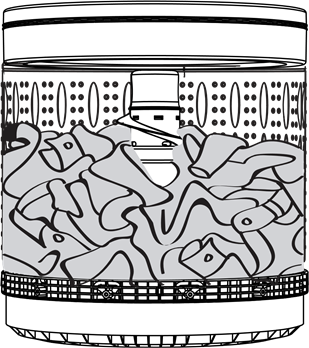

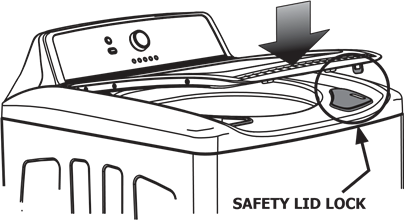

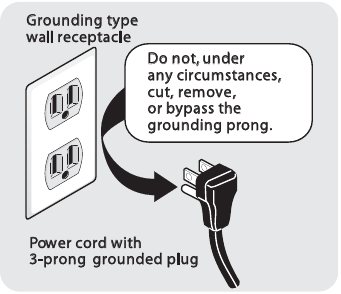
















Need help?
Do you have a question about the FFTW4120SW and is the answer not in the manual?
Questions and answers